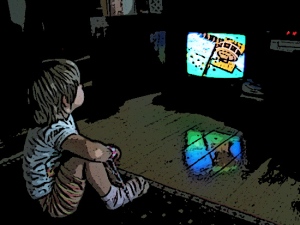But it Happens in Real Life!
I wish I had a dollar for every time I’d come to an author about a passage that seemed out of place or over-the-top, and I heard the phrase, “But it happens in real life!”
It’s always been more difficult for me to convince a writer to change something in their story if they feel it imitates real life. For instance, some writers insist on showing their character going to the bathroom. Not just “Oh, Jane went to the bathroom. She’ll be out in a minute,” but a much more detailed account from the point of view of the person using the bathroom. When I ask why, the answer I get is, “It happens in real life! It’s a nice little detail!” and my response is this:
Many things happen in real life. A person can spend all day staring at the television or playing a video game, but nobody wants to read a story about that. A writer should ask him/herself if the scene is pertinent. Do the traits coincide with the character? Does the scene move the plot along or reveal something about the character?
Most lives aren’t as action-packed as they are in fiction. A typical conversation “in real life” would go something like this:
“Hey, how’s it going?”
“Great, how are you doing?”
“Good, thanks.”
Boring, right? But it happens in real life nearly every time two acquaintances come in contact. In fiction, we’re supposed to enter into the middle of the action. Most of our days are filled with the mundane. Nothing much happens. An actual account of the daily activities of most people would be rather boring.
I had an author who had a scene where a man was leering, in a creepy way, at a woman who’d just gotten out of the shower and had a towel wrapped around her. He had an anatomical response, and the scene included him describing…certain parts of the woman. These people were not lovers. They barely knew each other. When I told the author the scene came off more creepy than sexy, she said this kind of male response “happens in real life!” She had a husband and sons and had witnessed it many times herself!
I tried to explain that while, yes, I was sure this was true, it made the male character unlikable and creepy. He was leering in a way that didn’t fit the situation. I said it would be better if he maybe looked away or was uncomfortable. Maybe he didn’t want to have that response, so he did everything to avert his eyes. In this way, the author would be able to convey the man was attracted to the woman, without making him seem skeevy.
The sister to “But it happens in real life!” is “But I lived it!”
In other words, the fiction is based on events that happened to the author, so they write it as it happened in real life, as opposed to having the incident fit into a fictional story. When told a scene may be over the top or boring, the author takes it as if you’re saying their life is wrong.
The editor is objective. They are looking at the manuscript from the point of view, “Is this a good story?” If the author is willing to adapt the real incident to fit a good fictional story, everybody wins. Unless the book is non-fiction, situations will have to be revised. Readers need a plot. A thread they can follow. And character development.
I once edited a book where the character took one step forward and five steps back, before finally having her epiphany about ten pages before the end of the book. From there, the author packed in all the action but merely summed it up. It was like a movie where people are just plodding along, not really doing much of anything, and in the last ten minutes, one of the characters explains a lot of interesting action-packed stuff that took place off-screen.
When this was told to the author, they stated that…they lived it. This is how it happened. Nothing could move the author from her position. She was too close to the story.
Yes, writers, especially for our first novel, are told to “write what you know” but that doesn’t mean, “write abut your life, verbatim, exactly the way it happened.”
photo credit: andres.thor via photopin cc

